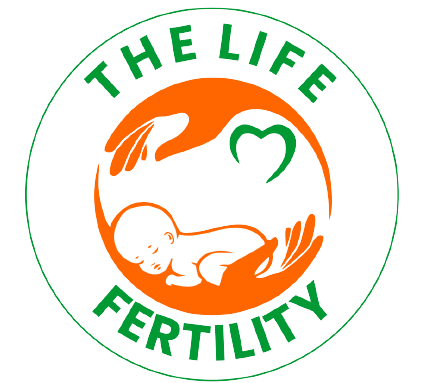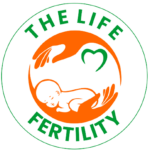
I. Introduction
The journey to parenthood can be filled with unexpected twists and turns. If you’re facing challenges conceiving naturally, you’re not alone. Millions of families and individuals around the world explore fertility treatments like In Vitro Fertilization (IVF) to help them achieve their dreams of having a child.
So, what exactly is IVF treatment? Simply put, it’s a process where eggs are fertilized by sperm outside of the body, in a laboratory setting. The resulting embryos are then carefully nurtured and transferred to the uterus with the hope of achieving a pregnancy. IVF treatment has revolutionized fertility care, offering hope and possibility to those who have struggled to conceive naturally.
This guide is your companion as you navigate the world of IVF treatment. We’ll explore the process step-by-step, discuss different types of IVF, and provide you with the information you need to make informed decisions about your fertility journey.
II. Who is IVF Treatment For?
In Vitro Fertilization (IVF) is a treatment option for couples and individuals facing infertility challenges. It’s a complex process, but it has helped many people achieve their dreams of parenthood. Let’s explore who might benefit from IVF treatment.

When is IVF Treatment an Option?
IVF is commonly recommended for couples who have been trying to conceive naturally for at least a year without success. It may also be considered in the following situations:
- Blocked fallopian tubes: If the fallopian tubes are blocked, eggs cannot travel from the ovaries to the uterus for fertilization. IVF can bypass this blockage by fertilizing the eggs in a lab and then transferring them directly to the uterus.
- Endometriosis: Endometriosis is a condition where tissue similar to the lining of the uterus grows outside the uterus. This 1 can cause pain, infertility, and difficulty with implantation. IVF may be an option for women with endometriosis.
- Male factor infertility: If the man has low sperm count, poor sperm quality, or other sperm-related issues, IVF can be used to increase the chances of fertilization.
- Ovulation disorders: Ovulation disorders can make it difficult to predict ovulation and time intercourse correctly. IVF can help by monitoring ovulation and ensuring that the egg and sperm are combined at the right time.
- Age-related fertility decline: Both men and women experience a decline in fertility as they age. IVF can be a viable option for older couples who are having difficulty conceiving naturally.
- Unexplained infertility: If no specific cause of infertility can be identified, IVF may be an option.
Is IVF Right for You?
Deciding whether IVF is right for you is a personal decision. It’s important to weigh the potential benefits and risks, as well as the emotional and financial commitment involved. Here are some factors to consider:
- Age: The success rates of IVF decrease with age, especially for women over 40.
- Cause of infertility: The underlying cause of infertility can affect the success rate of IVF.
- Cost: IVF treatment can be expensive, and insurance coverage may vary.
- Emotional readiness: IVF can be a physically and emotionally demanding process. It’s important to be prepared for the emotional rollercoaster and potential challenges.
It’s crucial to discuss your options with a fertility specialist to determine if IVF is the right choice for you. They can evaluate your individual situation and provide personalized guidance.
III. The IVF Treatment Process: Step-by-Step
IVF treatment involves several key steps. Let’s take a closer look at each one:
1. Initial Consultation and Testing
The first step is to schedule a consultation with a fertility specialist. During this appointment, the specialist will discuss your medical history, perform a physical examination, and recommend any necessary tests. Common tests include blood work, ultrasounds, and semen analysis.
2. Ovarian Stimulation
Once your doctor has a clear understanding of your fertility status, they will begin the ovarian stimulation process. This involves taking medications to stimulate the ovaries to produce multiple eggs. Monitoring ultrasounds and blood tests are used to track the development of the follicles containing the eggs.
3. Egg Retrieval
When the follicles are mature, a procedure called egg retrieval is performed. This is typically done under sedation using ultrasound guidance. A needle is inserted through the vagina into the ovaries to collect the eggs.
4. Sperm Retrieval
Sperm can be retrieved from the male partner through one of two methods:
- Ejaculation: The man provides a semen sample through masturbation into a sterile container.
- Testicular Sperm Extraction (TESE): This procedure is used for men with low sperm count or other sperm production issues. A needle is inserted into the testicles to extract sperm directly from the tissue.
5. Fertilization
The collected eggs are fertilized with sperm in a laboratory setting. This process is called in vitro fertilization (IVF). There are two main methods of fertilization:
- Conventional IVF: This involves placing a single sperm cell with each egg in a petri dish.
- ICSI (Intracytoplasmic Sperm Injection): This technique is used when the man has sperm count or motility issues. A single sperm cell is injected directly into each egg.
6. Embryo Culture
After fertilization, the embryos are placed in a special incubator where they are monitored for growth and development. This process is called embryo culture.
7. Embryo Transfer
Once the embryos have reached a suitable stage, typically 3-5 days after fertilization, one or two embryos are transferred to the uterus using a thin catheter. This procedure is called embryo transfer.
8. The Two-Week Wait
After the embryo transfer, there is a two-week waiting period before a pregnancy test can be taken. This waiting period is often referred to as the “two-week wait” and can be emotionally challenging.
9. Pregnancy Test and Follow-Up
Two weeks after the embryo transfer, a pregnancy test is taken. If the test is positive, the woman will typically undergo a series of follow-up appointments to monitor the pregnancy.
Important Considerations:
- The entire IVF process can take several weeks or even months.
- There are potential risks and side effects associated with IVF treatment, such as ovarian hyperstimulation syndrome (OHSS) and multiple pregnancies.
- Success rates for IVF vary depending on factors such as the age of the woman, the cause of infertility, and the experience of the medical team.


